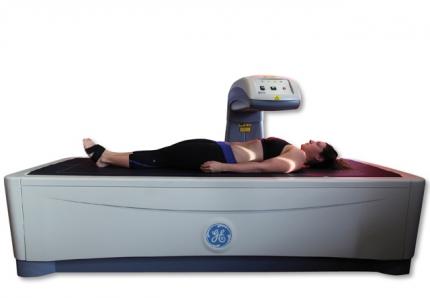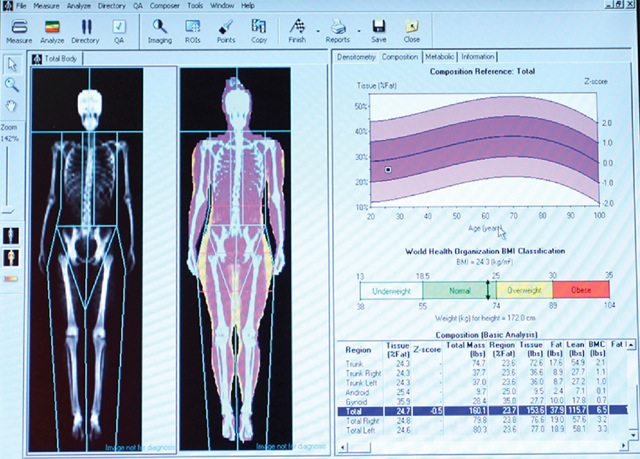DEXA: The Gold Standard in Body Fat Measurement

Jaime Filer graduated with a kinesiology degree from York University, where she was a varsity athlete. She’s also a former competitive bodybuilder who competed in drug-tested events throughout North America. If something new is trending in fitness, chances are Jaime’s already tried it!

DEXA: The Gold Standard in Body Fat Measurement
You’ve seen the scales at gyms that claim to be able to read your body fat accurately (also known as bioelectrical impedance scales). You’ve seen skin-fold testing, in which a trained professional uses skin-fold calipers to pinch certain areas of the body, and measure the thickness of the fold. You may have even seen a hydrostatic weighing machine, in which you’re completely submerged under water, and a particular reading is taken and compared to your weight out of the water to give you a body fat percentage.

But what you need to see is the DEXA scan. Dual-energy X-ray absorptiometry (DEXA) is currently being touted as the gold standard for measuring body fat. This test is based on a three-dimensional model that measures fat-tissue mass (subcutaneous fat and internal visceral fat), lean muscle mass, and total body mineral content (total skeletal mass and bone density). One of the useful elements of the DEXA scan is that it also indicates regional body fat distribution—i.e., fat tissue percentage in left arm versus right arm, trunk, left versus right leg, and most importantly, android versus gynoid fat. Regional fat distribution tells you where fat is located, which is just as important as how much total fat you have, if not more so. Carrying too much fat in the wrong area can make you more disposed to serious health problems. For example, seeing the ratio of android/gynoid fat distribution (fat carried on the waist or apple shape versus fat carried on the hips or pear shape) will give you a good indication of proneness to illnesses. It’s well known that excess fat around the abdomen and trunk and inside the abdominal cavity potentially puts you at greater risk for metabolic disorder, heart disease, and/or stroke.

In the end, DEXA boasts accuracy, reproducibility, safety, speed, and simplicity. No other technique can match the accuracy obtained from DEXA. Having your body fat tested at regular intervals, especially during periods of dieting, can be a helpful tool on your journey. It’s more reliable than all other testing modalities for a few reasons. Calipers measure only fat under the skin (subcutaneous, but not visceral), and there’s high likelihood of technical error because your measurement is only as good as the professional taking it. Bioelectrical impedance analysis has a high rate of false positive and false negative results. Because it’s a scale, there are too many variables to control, such as whether you ate or drank that day, whether you’re wearing clothes, etc. And lastly, underwater weighing just isn’t practical and is not as accurate as DEXA. Being submerged in water requires heavy equipment and is time consuming. It’s very rare to see this method of measurement used outside of a university lab setting. The cost of getting tested is usually around $125 which includeds a copy of the scan and a full report on your results.

